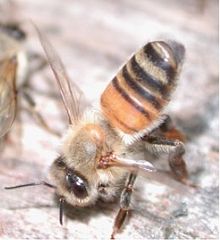
Back Feromoon Afrikaans فيرومون Arabic Feromona AST فرومون AZB Ферамоны Byelorussian Фэрамоны BE-X-OLD Феромон Bulgarian ফেরোমন Bengali/Bangla Feromon BS Feromona Catalan

A pheromone (from Ancient Greek φέρω (phérō) 'to bear', and hormone) is a secreted or excreted chemical factor that triggers a social response in members of the same species. Pheromones are chemicals capable of acting like hormones outside the body of the secreting individual, to affect the behavior of the receiving individuals.[1] There are alarm pheromones, food trail pheromones, sex pheromones, and many others that affect behavior or physiology. Pheromones are used by many organisms, from basic unicellular prokaryotes to complex multicellular eukaryotes.[2] Their use among insects has been particularly well documented. In addition, some vertebrates, plants and ciliates communicate by using pheromones. The ecological functions and evolution of pheromones are a major topic of research in the field of chemical ecology.[3]
- ^ "Definition of pheromone". Medicinenet. MedicineNet Inc. 19 March 2012. Archived from the original on 11 May 2011. Retrieved 14 February 2010.
- ^ Kleerebezem M, Quadri LE (October 2001). "Peptide pheromone-dependent regulation of antimicrobial peptide production in Gram-positive bacteria: a case of multicellular behavior". Peptides. 22 (10): 1579–1596. doi:10.1016/S0196-9781(01)00493-4. PMID 11587786. S2CID 38943224.
- ^ Wood William F. (1983). "Chemical Ecology: Chemical Communication in Nature". Journal of Chemical Education. 60 (7): 1531–539. doi:10.1021/ed060p531.